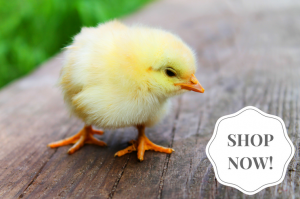
The Welsh Harlequin duck was developed in Wales in 1949 from a pair of light colored sports hatched from Khaki Campbell ducks. The breed was first imported to the United States in 1968 and admitted to the American Standard of Perfection in 2001.
Physical Attributes
Welsh Harlequins are slightly heavier than Khaki Campbells, but similar in body type. Their plumage color pattern, however, is more like that of a Mallard.
Males have a green head and white neck ring, like a Mallard, with body plumage that is similar to a Mallard’s but having more white feathers. The female’s plumage is a patchwork of shades of brown, gray, and black with lots of white frosting.
Unlike other duck breeds, the hens go through four distinctly different plumage patterns. The first occurs at two months of age. The second at four to five months. After the first year of laying, the hens molt into dark eclipse plumage that lasts three to four months. Finally they grow nuptial plumage, and thereafter molt twice annually, like other duck breeds.
The Welsh Harlequin duck actually comes in two color varieties. The gold variety is favored in Britain, while the silver variety is favored in the United States. The silver variety is not as dark as the gold variety. Additionally, the silver variety has iridescent blue secondary wing feathers, while the secondaries of the gold variety are bronze.
Aside from males and females differing in color as they mature, ducklings can be sexed at hatch with a fair degree of accuracy. The male duckling usually has a dark bill, while the female usually has a light-color bill with a dark spot at the tip. This difference last only a few days as their bill colors change. At maturity, the male has an orange bill, while the female has a dark green bill.
Breed Qualities
The Welsh Harlequin duck is a dual-purpose meat and egg breed. These ducks grow slowly to reach a live weight of between 4½ and 5½ pounds. Their meat is especially lean.
The hens begin laying at 6 to 8 months of age and continue to the age of 8 or 9 years. They lay 100 to 150 large eggs per year with white or, rarely, pale green shells. They are good setters and protective mothers.
Welsh Harlequins are excellent foragers, but they lack a strong sense of self-preservation. On free range, their naturally calm demeanor, light coloring, and inability to fly make them vulnerable to predators.
Welsh Harlequins readily adapt to all climates. They are less noisy and much calmer than most other duck breeds. They also have a particularly inquisitive disposition, making them constantly curious about what their humans are up to. Being naturally easygoing and friendly, Welsh Harlequins make terrific pets that are especially easy for children to care for.
Helpful Links
- Keeping Ducks for Eggs
- How to Keep Your Ducks Laying Well
- How the Eggs of Chickens, Turkeys, Ducks and Geese Compare
- How to Handle Duck Eggs for Eating
And that’s today’s news from the Cackle Coop.
Gail Damerow is the author of An Absolute Beginner’s Guide to Raising Backyard Ducks : Breeds, Feeding, Housing and Care, Eggs and Meat.

